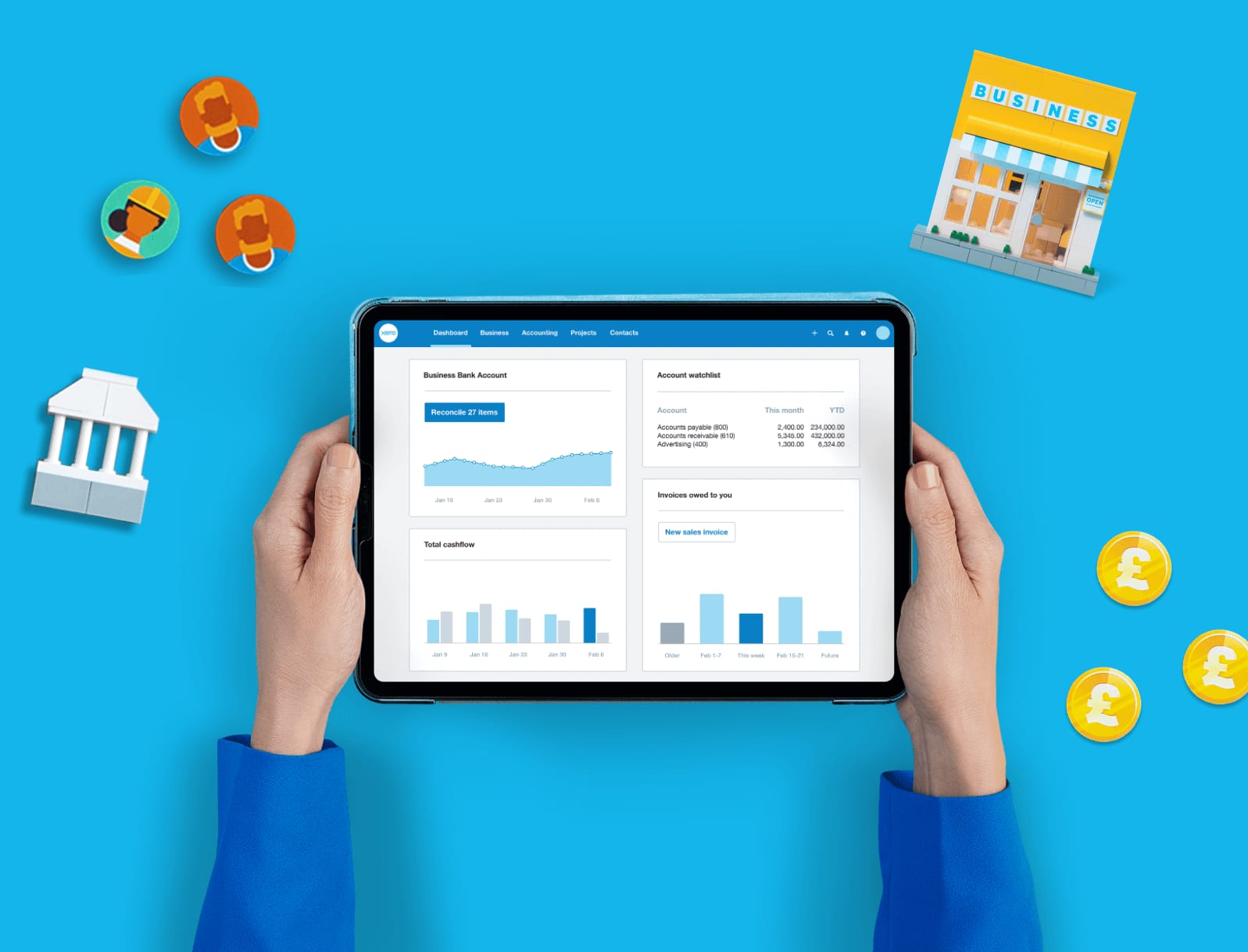Changes to Break-even
- Changing any of the variables of break-even (selling price, variable cost per unit or total fixed costs) changes the break-even point and level of profit it can expect to achieve
How the Break-even Point & Level of Profit is Affected by Changes in Variables
Increased Selling Price | Decreased Selling Price |
|
|
Increased Variable Costs | Decreased Variable Costs |
|
|
Increased Fixed Costs | Decreased Fixed Costs |
|
|
Benefits & Limitations of Break-even Analysis
- Break-even analysis provides valuable insights into the financial viability and performance of a business
- It is particularly useful for communicating with stakeholders including investors or lenders
- It demonstrates the financial viability of the business and gives an insight into potential returns on investment
- It demonstrates the financial viability of the business and gives an insight into potential returns on investment
The Benefits of Break-even Analysis
Use of Break-even | Explanation |
Profitability assessment |
|
Cost control |
|
Pricing decisions |
|
Financial planning |
|
Sensitivity analysis |
|
Performance monitoring |
|
Decision making |
|
- In common with other quantitative analysis tools break-even analysis has some limitations
Diagram Explaining the Limitations of Break-even Analysis

The limitations of break-even analysis
Advantages of calculating a break-even point
We cover the benefits of calculating your break-even point, including what it means for your profitability.

Financial control is essential to running any business, particularly in a competitive market like ecommerce. Applying the break-even analysis formula to your business can be a valuable way to stay in control of your finances. The advantages of calculating your break-even point include:
- Determining when your business begins to make a profit. Knowing how many units you need to sell to make a profit can help you set appropriate revenue targets.
- Establishing pricing. Your break-even point can influence your pricing strategy; businesses in competitive markets price their products to attract and compete with competitors. However, understanding how your pricing strategy affects your gross margin is crucial to maintaining a healthy financial bottom line.
- Analysing costs. Calculating your break-even point is also great for analysing your business costs, including your total fixed costs. To avoid your company operating at a loss, you need to keep your business costs under control. Identify fluctuations in your total costs to pick up on expenses you may have missed. It’s also important to use regular break-even analysis to identify trends in your business costs. This will help you spot if your variable costs per unit are creeping up.
- Analysing product performance. Calculating and monitoring your break-even point can help analyse a product’s performance and contribution margin. It’s also great for determining the risk associated with stocking a new product. Product lines that are cost-intensive or not selling well can take longer to become profitable. Similarly, a product or service with a contribution margin that is too low means it takes longer for your business to reach profitability.
How to calculate your break-even point
Find out how to calculate the break-even point in sales and units for your online business.

A business has two ways to calculate its break-even point: in units and sales. You can use a unique BEP formula to calculate your break-even point for either scenario.
Calculate your break-even point in units
Calculating your break-even point (BEP) in units means calculating the number of units you need to sell to come to a neutral financial position. This is established through the following formula:
Break-Even Point (units) = Fixed Costs ÷ (Revenue Per Unit – Variable Cost Per Unit)
Calculate your break-even point in sales value
Alternatively, ecommerce businesses can choose to calculate their break-even point (BEP) in sales value:
Break-Even Point (Sales in GBP) = Fixed Costs ÷ Contribution Margin
Contribution margin here refers to your product’s selling price less variable costs per unit. Once you have calculated your BEP, you can use it to set your sales target, explore possible cost cutting measures and evaluate the need to raise your prices.
How to calculate a break-even point with multiple products
We take a look at how you can calculate your break-even point if your ecommerce business sells multiple products.

Many online businesses may choose to diversify and stock multiple products. If your business stocks numerous products, you can calculate your break-even point using weighted average contribution margins. In short, you would calculate the break-even point as:
Break-Even Point (BEP) = Fixed Costs ÷ Weighted Average Contribution Margin per unit (WACM)
You can compute the weighted average contribution margin by subtracting the weighted average variable expenses from the weighted average selling price. This would look like this:
Weighted Average Contribution Margin (WACM) = Weighted Average Selling Price- Weighted Average Variable Expenses
This is where:
Weighted Average Selling Price = (Sale price of product A × Sales percentage of product A) + (Sale price of product B × Sale percentage of product B) + (Sale price of product C × Sales percentage of product C)
Weighted Average Variable Expenses = (Variable expenses of product A × Sales percentage of product A) + (Variable expenses of product B × Variable expenses of product B) + (Variable expenses of product C × Sales percentage of product C)
Once you’ve calculated the BEP for multiple products, you can then use it to assess the current product line-up and profitability for the products you are selling. A good break-even analysis should be able to highlight unsustainable variable costs such as labour and materials and identify poor selling or low profitability products.
Break-even point examples
We provide illustrative examples of how you can calculate your break-even point.

Assume ecommerce business ‘Scrubs & Lotions’ has a projected annual income of £4,000 for its sale of face scrubs. This is based on a forecasted sales volume of 2,000 units at £2 per unit.
The company’s fixed expenses (such as rental of the business premises) have been estimated to be £9,000.
The company sells face scrubs via its website online, which is considered its total revenue. Similarly, its total variable costs are estimated to be £1,000 or £0.50 of variable costs per unit. In this scenario, you can calculate Scrubs & Lotions’ break-even point in units as:
Break-even point (BEP) =£9,000 /(£2-£0.50) = 6,000 units.
Scrubs & Lotions would need to sell 6,000 units of their face scrubs to break even. In other words, this is the point where their revenue and costs will be equivalent. An annual sales volume lower than 6,000 units at £2 per unit means that Scrubs & Lotions will be operating at a loss.
Similarly, you can use the above example to calculate the break-even point in sales value.
Break-even point (BEP) in sales value = £9,000/ (£2-£0.50/£2) = £12,000 in sales.
Scrubs & Lotions would need to achieve an annual sales target of £12,000 to break even at its proposed selling price of £2 per unit to cover its total costs. Any additional sales would be considered profit for the company.
How to calculate a break-even point in Excel
Find out how to calculate your business’ break-even point in Excel with the help of a downloadable Excel template.

You can also use Microsoft Excel to calculate your break-even point in monetary value or units. To perform a break-even analysis in Excel, you can choose to either:
- Use the break-even analysis formula: Total revenue/ (selling price per unit- variable cost per unit).
- Calculate a break-even point using the ‘Goal Seek’ feature in Excel.
- Calculate a break-even point using your sales data and a sales table to produce a break-even chart.
Our downloadable Excel template can provide handy formulas and information on how to calculate your break-even point in Excel using one of the choices above. You can also create a break even report in Xero using the reporting functionality.
How to reduce your break-even point
We explore what ecommerce businesses can do to reduce their break-even point.

In short, the lower your break-even point is, the better your business’ financial stability and profitability projections are. Reducing your break-even point allows your business to reach a point of profitability in a shorter time. For ecommerce businesses, the common move is to increase product selling prices. However, this can be a tricky option since increasing your selling price can negatively impact customer behaviour, particularly in a market where customer sensitivity is high. There are other ways your business can reduce its break-even point, such as;
- Working on cutting your fixed costs/expenses. For an ecommerce business, this can look like negotiating a better rental price for your storage unit or reducing fixed payroll costs by moving to a payroll software such as Xero Payroll Software.
- Exploring ways to reduce your variable running costs. Your variable costs may include product and warehouse storage, product return, shipping and supply costs. It would also help if you considered the specific cost variables of your industry.
One good example of reducing your variable costs as an ecommerce business would be to negotiate with your suppliers for discounted product prices in exchange for bulk buying or a commercial buying agreement.
How often should you calculate your break-even point?
Take a look at how often you should be calculating your break-even point as an ecommerce business.

The answer depends on the nature of your business. While some ecommerce businesses prefer to calculate their monthly break-even point, others opt to perform a break-even analysis yearly. Some of the factors that may influence whether you calculate your break-even point include:
- Industry
- Individual preference
- Business environment
If you’re interested in how to calculate your monthly break-even point, you will need to use your monthly fixed costs and sales figures, instead of annual projections.
Helpful resources on running an ecommerce business
You can use Xero alongside a range of ecommerce integrated apps to sync your ecommerce sales data and have it all in one place, giving you total visibility of your numbers and all the information you need to calculate your break-even point. For more resources on running your ecommerce businesses, take a look at Xero’s toolkit for building and running a successful business online.











